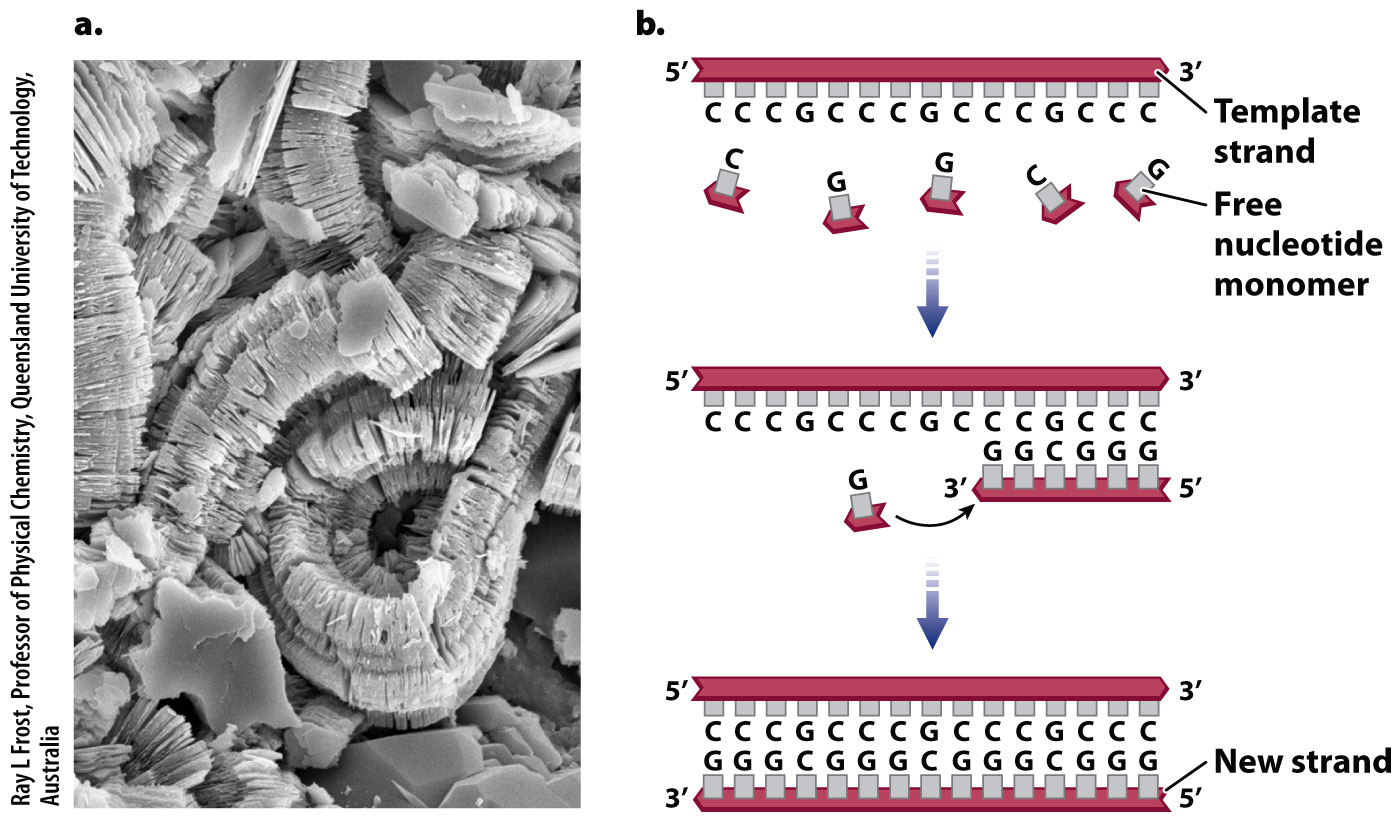Experiments show how life’s building blocks can form macromolecules.
From the preceding discussion, we have seen that life’s simple building blocks can be generated under conditions likely to have been present on the early Earth, but can these simple units be linked together to form polymers? Once again, careful experiments have shown how polymers could have formed in the conditions of the early Earth. Clay minerals that form from volcanic rocks can bind nucleotides on their surfaces (Fig. 2.29a). The clays provide a surface that places the nucleotides near one another, making it possible for them to join to form chains or simple strands of nucleic acid.

In a classic experiment, biochemist Leslie Orgel placed a short nucleic acid sequence into a reaction vessel and then added individual chemically modified nucleotides. The nucleotides spontaneously joined into a polymer, forming the sequence complementary to the nucleic acid already present (Fig. 2.29b).
Such experiments show that nucleic acids can be synthesized experimentally from nucleotides, but until recently the synthesis of nucleotides themselves presented a formidable problem for research on the origins of life. Many tried to generate nucleotides from their sugar, base, and phosphate components, but no one succeeded until 2009. That year, John Sutherland and his colleagues showed that nucleotides can be synthesized under conditions thought to be like those on the young Earth. These chemists showed how simple organic molecules likely to have formed in abundance on the early Earth react in the presence of phosphate molecules, yielding the long-
47
Such humble beginnings eventually gave rise to the abundant diversity of life we see around us, described memorably by Charles Darwin in the final paragraph of On the Origin of Species:
It is interesting to contemplate an entangled bank, clothed with many plants of many kinds, with birds singing on the bushes, with various insects flitting about, and with worms crawling through the damp earth, and to reflect that these elaborately constructed forms, so different from each other, and dependent on each other in so complex a manner, have all been produced by laws acting around us. . . . There is grandeur in this view of life . . . from so simple a beginning endless forms most beautiful and most wonderful have been, and are being, evolved.